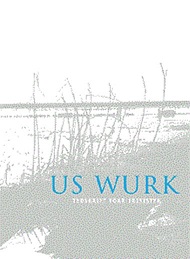Geographische Adjektive und Einwohnernamen im Nordfriesischen: naiblinge, såhulme, muasemböör, wiks, stianoodsk, hüsemer
Samenvatting
This article discusses the formation, the distribution, the historical development and the synchronic morphosyntactic status of geographical adjectives and inhabitant names in North Frisian. It is shown that the oldest suffixes for the formation of geographical adjectives are -inge and -e; the latter appears after base words on -em and -hulm and the former elsewhere. Inhabitant names are formed by substantivizing the geographical adjectives. Derivations with -inge and -e go back to the genitive plural forms of inhabitant names in prenominal position, which were reanalyzed as (geographical) adjectives. The fact that most of the time they remain uninflected betrays their historical origin as nouns. On the mainland the suffix -inge is widespread in geographical adjectives, whereas the suffix -e was replaced by either -inge or -er already in the course of the 18th and 19th centuries. On the islands, where word-final schwa was regularly deleted, -inge became -ing, and the suffix -e was lost in the numerous place names on -em, after which a new suffix, -büür/-böör, developed, presumably from the genitive plural form of a plurale tantum meaning ‘community of farmers (Bauerschaft)’. Some younger placenames on Föhr and Amrum take the suffix -s(k). More recent developments are the addition of the suffix -er to geographical adjectives on -inge on the mainland, or even the complete replacement of the original suffixes (-inge, -büür, -s) by -er.

